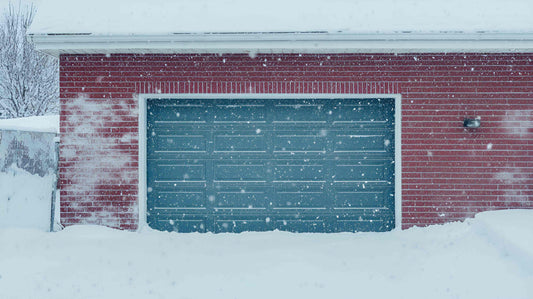
2025 Vehicle Damage Report: Total Cost & Average Repair Estimates
Share
At one point or another, nearly every car owner will be hit with an unexpected repair bill. But it’s more than just traffic accidents we have to worry about — from hail damage to chewed wiring to catalytic converter theft, vehicle damage can come from just about anywhere.
And the costs? They can add up fast.
In this guide, we break down the most common types of vehicle damage, average repair costs, and total annual losses.
Quick Breakdown: Average Repair Cost by Damage Type
| Type of Damage | Annual U.S. Cost | Average Repair Cost |
|---|---|---|
| Collisions & Crashes | $417 billion | $2,500–$6,000 |
| Hail Damage | $8–$15 billion | ~$5,000 |
| Flood / Storm Damage | Varies (e.g., $4.9B from Harvey) | Varies widely |
| Deer Collisions | ~$10 billion | ~$4,000 |
| Rodent Damage | ~$200 million | $2,000+ |
| Theft & Vandalism | ~$8 billion | ~$8,886 per vehicle |
| Mechanical Failures | Tens of billions (est.) | $1,000–$7,000+ |
What Is Considered Vehicle Damage?
Vehicle damage typically falls into one or more of the following categories:
- External damage: Dents, scratches, broken windows, paint damage
- Internal damage: Chewed wires, water in engine compartments, failed electronics
- Mechanical failure: Engine, brakes, transmission
- Natural causes: Weather, floods, wildlife
- Intentional damage: Vandalism, theft
Understanding the source and type of car damage can help you better plan insurance coverage — and avoid surprises at the repair shop.
1. Collision Damage: Still the #1 Cost Driver
Despite improved safety features, traffic accidents remain the leading cause of car repair expenses in the U.S.
According to NHTSA, the total economic cost of crashes reached $340 billion in 2019. Adjusted for inflation, Statista estimates this to be around $417 billion in 2024 — a staggering number.

Average repair costs:
- Property damage only: ~$2,500
- With injuries: Up to ~$6,000
Rear-end collisions, distracted driving, and highway pileups continue to be major contributors.
2. Weather-Related Vehicle Damage: Hail, Floods & Storms
Hail Damage
Hailstorms are among the most common weather-related claims for vehicles, with between $8 and $15 billion worth of damage being reported each year. State Farm alone reported to have paid out over $600 million in hail-related auto claims in 2022.

- Average repair bill: ~$5,000
Dents, cracked windshields, and totaled roofs are all common outcomes.
Flood & Storm Damage
Vehicles caught in flash floods or hurricanes are often declared total losses. After Hurricane Harvey, insurers reported $4.9 billion in flood-related vehicle claims.
- Average cost: Highly variable. Mild flooding may cost ~$1,000 to clean and dry, while submerged cars are typically unsalvageable.
Tip: Avoid buying a used car with flood history. Damage may not show up immediately but can destroy electrical systems over time.
3. Wildlife Damage: From Deer Collisions to Rodent Chewing
Deer Collisions
Vehicle collisions with animals are far more common than you might think. According to one study, an estimated 2.1 million deer are struck by cars each year, resulting in $10 billion in economic losses.

Data via State Farm
- Average repair costs: ~$4,000
These accidents are most common in the fall during mating season and often happen at dawn or dusk in rural areas.
Rodent Damage
It’s not just deer you have to worry about. Mice, rats, squirrels, and other pests are notorious for nesting under hoods and chewing wires, hoses, and insulation, causing an estimated $200 million in damage in the US each year.
- Average repair bill: $2,000 or more (Try our Free Cost Calculator)
Tip: Consider preventive tools like Box-Kat, a physical barrier designed to stop mice from ever reaching your car.
4. Theft & Vandalism
In 2024, over 850,000 vehicles were reported stolen in the U.S., down slightly from previous years but still translating to around $8 billion in losses.
- Average loss per vehicle: $8,886
Stolen catalytic converters, broken windows, slashed tires, and spray paint can add thousands more in additional losses.
Catalytic converter theft alone has spiked due to precious metal resale value — and repairs can run $1,000 to $3,000 per vehicle.
5. Mechanical Failures: Engines, Brakes & Transmissions
While not always classified as “damage,” mechanical failures are one of the biggest sources of vehicle repair costs:
- Blown engine: $3,000–$7,000
- Transmission failure: $1,500–$5,000
- Brake system replacement: $300–$1,000+
Most failures occur gradually, but poor maintenance or unexpected part failures can leave drivers with massive bills.
6. Hidden Costs of Vehicle Damage
Beyond the repair estimate, many drivers forget about:
- Towing fees: $100–$500 depending on distance
- Rental car or rideshare costs while your car is in the shop
- Increased insurance premiums after a claim
- Loss in resale value (even after repairs)
These hidden costs can push your total spend much higher than the initial damage estimate.
Final Thoughts
Whether it’s a cracked windshield, a chewed wire harness, or a stolen tailpipe, vehicle damage costs Americans hundreds of billions of dollars every year.
Being informed, proactive, and protected makes all the difference — especially when even a single incident could cost thousands.
FAQ: Vehicle Damage Costs
What is the average cost of vehicle damage?
Most repairs fall between $2,000–$5,000 depending on the damage type. Collision and mechanical repairs are the most expensive.
Is rodent damage covered by car insurance?
Rodent damage is often covered by comprehensive insurance, but certain exclusions and limitations could deny a claim.
What’s the most expensive type of vehicle damage?
Accidents and mechanical failures usually top the list, but theft of critical parts like a catalytic converter can be just as costly.
How much vehicle damage happens in the U.S. each year?
All combined, over $450 billion in losses are reported annually from vehicle-related damage and theft.



